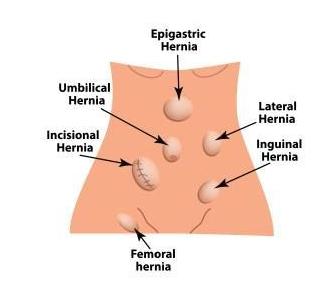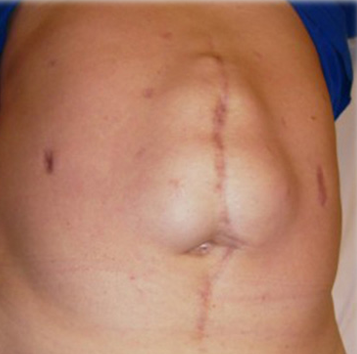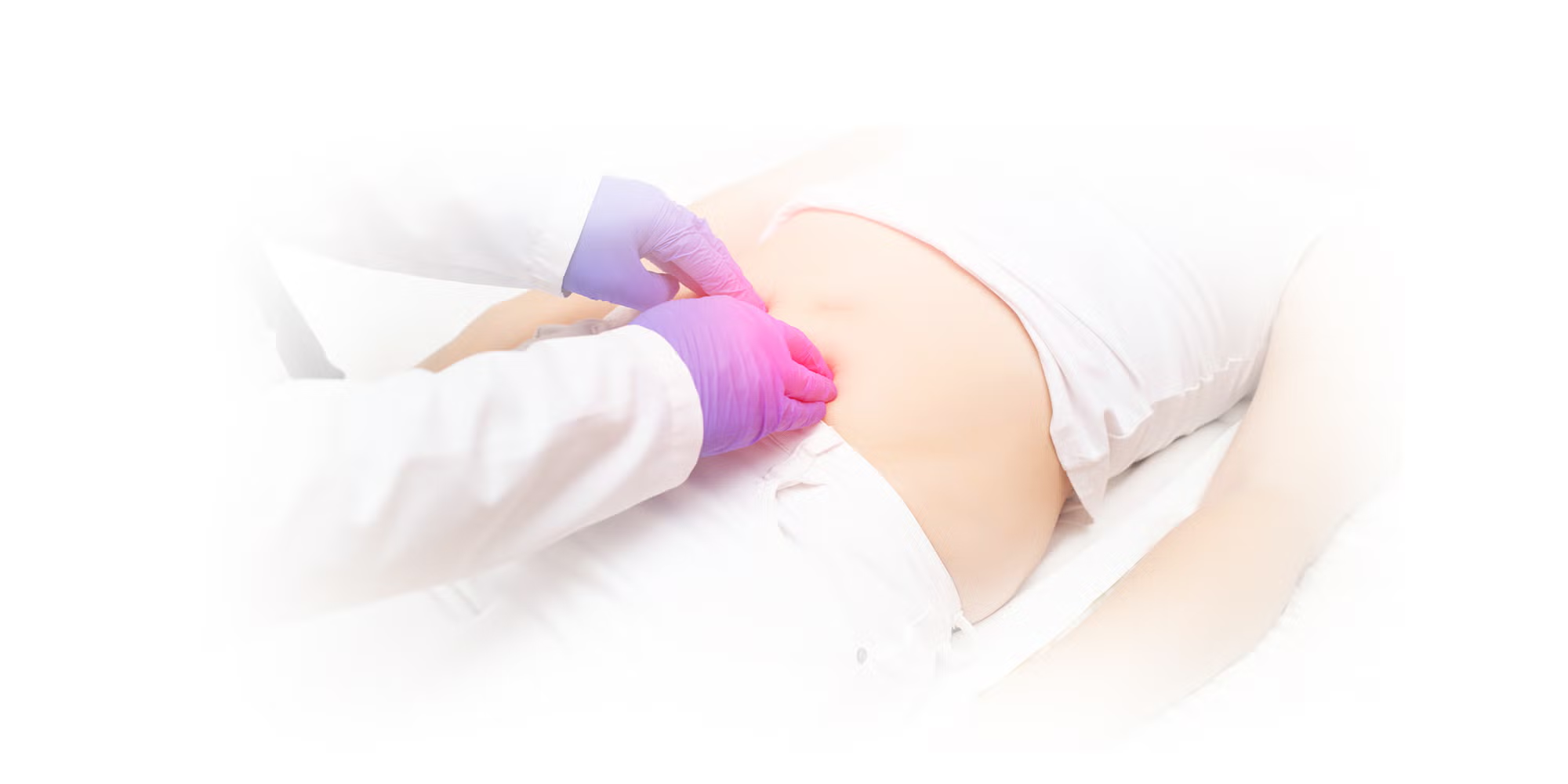Hernia Repair
What is a Hernia?
A hernia is a rupture, or hole, in the abdominal wall that has gone through layers of both muscle and connective tissue. Hernias are caused by a combination of increased internal pressure and weakness from the abdominal wall.
Common hernia types/locations include:
- Epigastric hernia – abdomen
- Hiatal hernia – stomach (GERD/Acid Reflux/Heartburn)
- Inguinal hernia – groin
- Femoral hernia – groin/inner thigh
- Lateral hernia – lower abdomen
- Umbilical or Ventral hernia – belly button
- Incisional hernia – previous surgery site
- Recurrent Incisional hernia – previously repaired hernia site

What is a Complex Hernia?
Complex hernias are more serious than a common hernia. Ignoring a hernia and leaving it untreated or waiting for it to become painful increases your risk of it developing into a complex hernia. Having multiple failed surgical attempts to repair a common hernia in the muscle wall or tissue can progress into a complex hernia. The chances of successful hernia treatment decreases each time the procedure is repeated for repair. Multiple surgeries may weaken or strain the damaged tissue wall worsening the hernia. The best treatment option to repair a Complex hernia often involves robotic surgery.

When to Seek Help
While hernias can be uncomfortable, most are not an emergency. One of the dangers of hernias is that they can become “incarcerated” or “strangulated.” This is a scenario where a segment of the intestines has come through the hernia and becomes trapped. This can cut off the blood flow to the intestines and requires emergency repair surgery.
Similarly to a hole in a wall or a roof, a hernia won’t fix itself — it will slowly get bigger over time. As it gets larger, it typically becomes more symptomatic. This is when it’s time to meet with a surgeon to discuss treatment options.
Symptoms That Require Immediate Repair Surgery
- Sharp, increasing pain at hernia site, especially if accompanied by nausea or vomiting.
- The hernia cannot be pushed back in.
- The skin around the hernia is red and painful.
Why Robotic Surgery?
Robotic surgery uses high-definition 3D imaging to enhance a surgeon’s ability to effectively treat your hernia. The robotic arms have a range of motion beyond that of the human hand, allowing for greater precision and dexterity during hernia surgery. This enables a surgeon to selectively place mesh reinforcements between abdominal wall layers to reduce the risk of mesh migration and shrinkage — and in turn, reduce the risk of future complications.
Previously, hernia surgery may have required traditional open or laparoscopic incisions. Comparatively, robotic hernia surgery requires fewer and smaller incisions, reducing the amount of trauma to the abdominal wall and decreasing pain, shortening recovery time, lowering the risk of recurrence and reducing the risk of infection.
Benefits of Robotic Hernia Repair Surgery
- Decreased post-surgery pain
- Minimal blood loss
- Fewer and smaller scars
- Increased precision for more accuracy
- Faster recovery time
- Shorter to no hospital stay
- Minimum risk of infection
